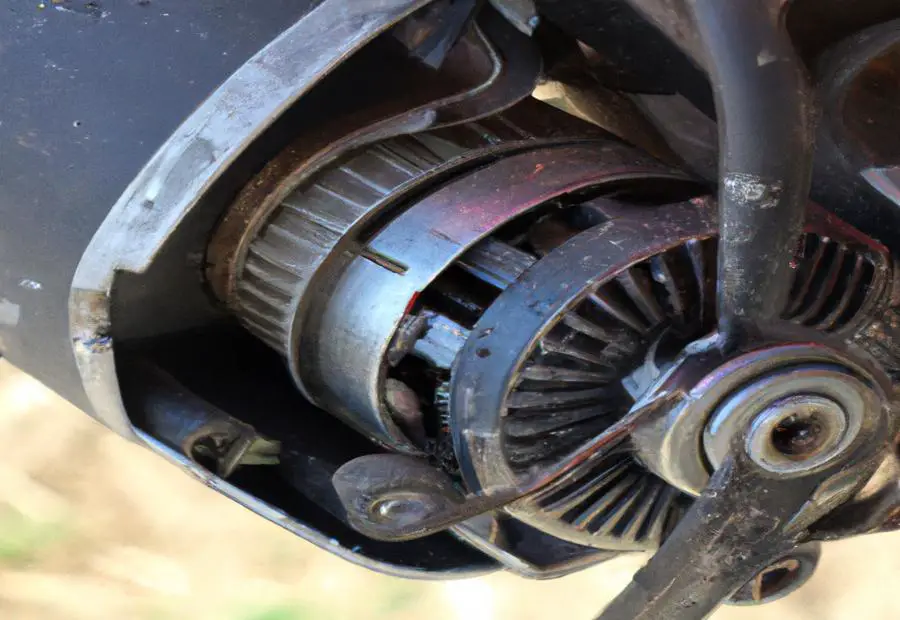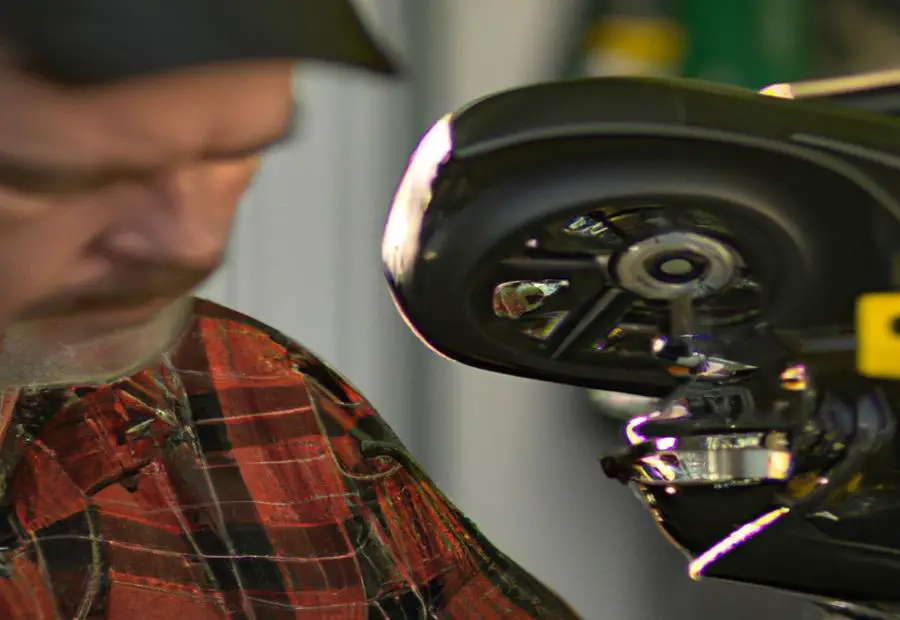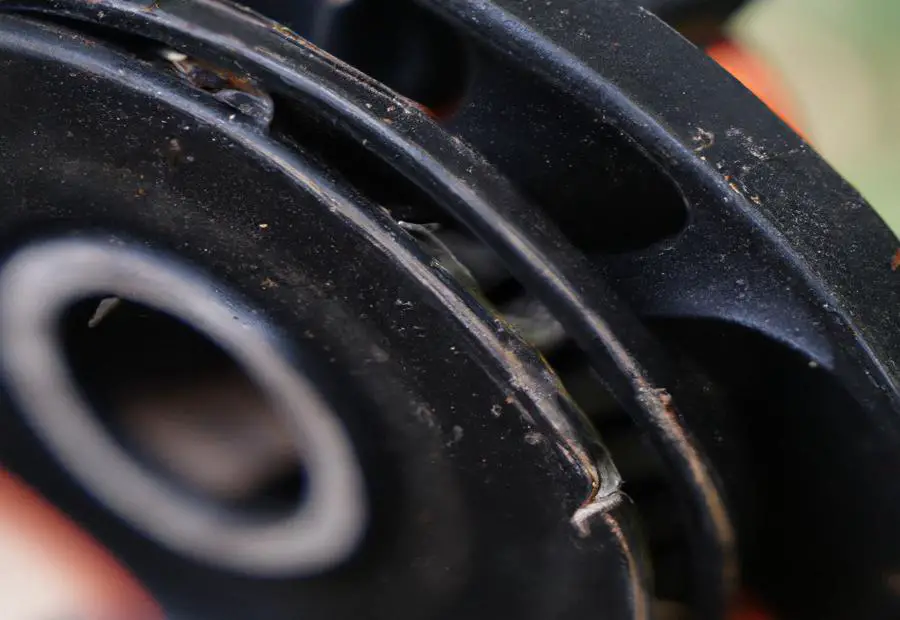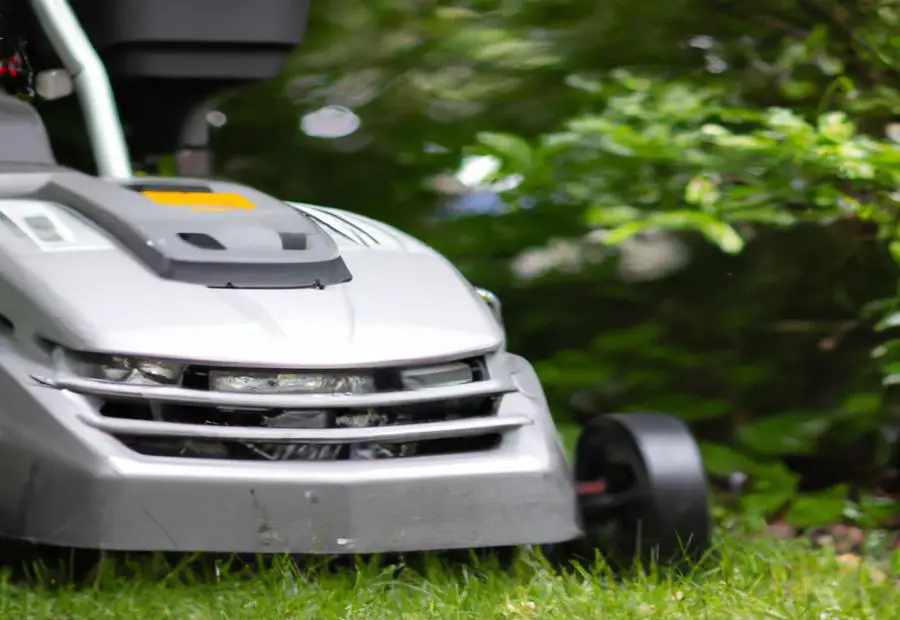GardenerHeaven.com is reader-supported. When you buy through links on our site, we may earn an affiliate commission.

When it comes to a Husqvarna riding mower that won’t move forward or reverse, it’s crucial to understand the causes and fixes. In this section, we’ll provide an overview of the issue at hand and highlight the importance of addressing this problem promptly. By delving into the mechanics and potential solutions, we’ll equip you with the knowledge to efficiently get your mower back in action.
Overview of the issue

Photo Credits: Gardenerheaven.Com by Raymond Campbell
Mower not moving forward or reverse is a significant issue for Husqvarna riding mower users. This can be due to mechanical or electrical problems. It’s essential to address this issue quickly for the proper functioning of the mower and to avoid further damage.
The Husqvarna riding mower not moving is a huge annoyance. The cause could be a transmission fault, a worn-out drive belt, or a damaged axle. It’s essential to identify the cause and find the right remedies to fix it.
Troubleshooting can help determine if the problem is loose drive belts or debris stuck in the wheels. In severe cases, some components may need to be replaced. These include the transmission and axle. These must be correctly installed and aligned for the mower to move in both directions.
Regular maintenance is critical to preventing future issues. This involves cleaning the mower deck, lubricating moving parts, and inspecting belts. This helps ensure optimal performance and keeps components working for a long time.
Don’t ignore the non-moving mower. Take action now!
Importance of addressing the problem promptly
It’s vital to address the issue of a Husqvarna Riding Mower not moving forward or in reverse quickly. This can help prevent further complications. Ignoring it can cause costly repairs or require a new mower. Taking immediate action is a must to keep the mower running efficiently.
This issue can be a big problem. It can disrupt regular gardening and landscaping tasks. This can be especially difficult for people who use their mowers for work.
The inability to move forward or backward may point to mechanical or electrical problems. If not fixed, these can lead to severe damage. It can be costly to repair. Resolving the issue promptly can help avoid extra wear and tear and make the mower last longer.
Also, promptly fixing the issue shows responsible maintenance. It offers a commitment to caring for the mower correctly and ensuring it works for a long time. Taking prompt action is an example of proper mower maintenance in the community.
Caution! Your mower has hit a roadblock, or shall we say a mower block?
Causes of Husqvarna Riding Mower not moving forward or Reverse

Photo Credits: Gardenerheaven.Com by Brian Nguyen
A Husqvarna riding mower not moving forward or in reverse could be caused by numerous factors. A worn-out drive belt, a faulty transmission, a malfunctioning drive pulley, a clogged air filter, and low engine oil are all possible causes of the issue. To troubleshoot, follow these five steps:
- Inspect the drive belt and replace it if needed.
- Examine the transmission for damage or leaks. If any, repair/replace components.
- Ensure the drive pulley is functioning correctly and engaging the gear mechanism. Clean/replace if faulty.
- Clean/replace the air filter to ensure proper airflow.
- Check engine oil levels and replace them if old or contaminated.
In addition, regularly maintain the mower; keep it clean, lubricate the parts, and check/adjust drive belt tension. Also, inspect/lubricate transmission components and replace the air filter when necessary.
Husqvarna riding mowers have a long-standing history of reliability and performance. They have consistently improved their products from transmission technology to more efficient engines. You can enjoy many years of dependable service with a Husqvarna riding mower with proper maintenance and timely repairs.
Fixes for Husqvarna Riding Mower not moving forward or reverse

Photo Credits: Gardenerheaven.Com by Sean Taylor
If your Husqvarna riding mower refuses to budge in either forward or reverse, don’t panic! In this section, we’ll explore a range of fixes to get your mower moving again. We’ve covered you, from troubleshooting steps for common causes to replacing damaged components. Plus, we’ll share some maintenance tips to prevent these issues from occurring. Say goodbye to a stationary lawn and get ready to tackle the problem head-on!
Troubleshooting steps for common causes
A Husqvarna riding mower might not be able to move forward or reverse. Here’s a 4-step guide to troubleshooting common causes:
- Check the transmission belt. Make sure it’s aligned, not damaged, and not loose. Replace if worn or broken.
- Inspect the drive pulley. Look for any signs of damage or wear. Clean and lubricate it if necessary. Replace if damaged.
- Examine the clutch mechanism. Make sure it engages and disengages correctly when operating the mower. Adjust or replace as needed.
- Check the axle key. Look for damage or wear between the wheel and axle. Replace if necessary.
These steps can help identify and resolve the issue. Do each step carefully to avoid replacing components that may not be at fault.
Regular maintenance can also reduce future issues. Clean debris off undercarriages, inspect belts and pulleys and keep all components well-greased.
Husqvarna riding mowers are known for their durability and reliability in rugged terrain.
Replacing damaged components
Once upon a time, there was a dedicated Husqvarna Riding Mower owner named John. He noticed his mower wasn’t moving forward or reverse, causing frustration. After troubleshooting, he identified a damaged drive belt as the culprit.
To replace the component, John followed the steps from Husqvarna:
- Identify the damaged piece.
- Obtain a suitable replacement part.
- Gather all necessary tools.
- Carefully remove the damaged piece.
- Install the new component.
John replaced the drive belt, and his mower regained full functionality. He learned the importance of promptly replacing damaged components and could complete his yard work effortlessly.
To avoid future issues, regular maintenance helps. This includes routine inspections, lubricating moving parts, cleaning debris from belts and pulleys, and promptly addressing abnormalities.
Maintenance tips to prevent future issues
Stay on top of regular maintenance to keep your Husqvarna Riding Mower in optimal condition and ward off issues. Follow these simple steps for smooth and efficient running:
- Inspect and clean the cutting deck: Look at the cutting deck for any debris, like grass clippings or twigs. Get rid of any build-up with a brush or hose. This will help the mower run better and lessen stress on the engine.
- Check and replace the oil: Proper lubrication is vital for the engine’s life. Check the level and quality of the oil often and switch it out per the manufacturer’s instructions. This will help avoid wear and tear on the engine and keep performance top-notch.
- Replace air filters often: Clogged air filters can block air to the engine, reducing performance and even leading to engine damage. Inspect and replace air filters as needed for correct air intake and combustion.
- Monitor tire pressure: Use a tire pressure gauge to always keep an eye on the tire pressure of your riding mower. Underinflated tires can affect maneuverability; overinflated tires can cause a rough ride and damage. Proper tire pressure will maximize traction and make for a smoother ride.
- Store your mower correctly: When not in use, store your riding mower in a clean and dry place, preferably indoors or covered. Exposure to wetness or extreme weather can lead to rusting or other damage, affecting its performance.
Following these maintenance tips, you can prevent potential issues with your Husqvarna Riding Mower and keep it running reliably for years.
Conclusion

Photo Credits: Gardenerheaven.Com by Timothy Torres
Husqvarna riding mowers can sometimes have issues. They won’t move forward or reverse. There are several causes and fixes.
A faulty drive belt could be one cause. If it’s broken or worn out, it needs replacing. Another cause could be a problem with the transmission. It may need to be repaired or replaced. Not maintaining the mower can cause it to get stuck too, and unable to move.
To resolve these issues, Husqvarna suggests some steps. Check the drive belt. If it needs replacing, do so according to the manufacturer’s instructions.
Also, clean the mower regularly. Make sure the transmission is lubricated. If your Husqvarna riding mower won’t go forward or reverse, it probably has something wrong with the drive belt, information, or maintenance. With the proper repairs and replacements, you can ensure your mower runs smoothly.
Some Facts About “Husqvarna Riding Mower Won’t Move Forward or Reverse: Causes and Fixes”:
- ✅ A worn-out drive belt is one of the reasons a Husqvarna riding mower may not move forward or reverse. (Source: Team Research)
- ✅ Low hydraulic fluid levels can also cause a Husqvarna riding mower to fail to move properly. (Source: Team Research)
- ✅ A damaged or missing axle key can lead to lack of movement in a Husqvarna riding mower. (Source: Team Research)
- ✅ A worn or faulty transmission or hydrostatic drive can also be the cause of a Husqvarna riding mower’s mobility problems. (Source: Team Research)
- ✅ Removing air from the mower’s hydraulic system is necessary to ensure proper movement. (Source: Team Research)
FAQs about Husqvarna Riding Mower Won’t Move Forward Or Reverse
Question 1: Why is my Husqvarna riding mower not moving forward or in reverse?
Answer 1: There can be several reasons for this issue, including a worn-out drive belt, low hydraulic fluid levels, a damaged axle key, or a worn or faulty transmission or hydrostatic drive.
Question 2: How can I fix a worn-out drive belt in my Husqvarna riding mower?
Answer 2: To fix a worn-out drive belt, you must obtain a replacement belt and follow specific steps outlined in the operator’s handbook or seek the help of a qualified technician.
Question 3: What should I do if the hydraulic fluid levels in my Husqvarna riding mower are low?
Answer 3: If the hydraulic fluid levels in your mower are low, you should first check the fluid level and add more if needed. If the stories remain low, a leak in the hydraulic system may require further inspection and repair.
Question 4: How can I fix a damaged or missing axle key in my Husqvarna riding mower?
Answer 4: To fix a damaged or missing axle key, you will need to remove the old key, check for any damage, obtain a replacement key, and install it correctly to ensure proper movement of the wheels.
Question 5: What should I do if my Husqvarna riding mower’s transmission or hydrostatic drive is worn or faulty?
Answer 5: If your mower’s transmission or hydrostatic drive is worn or faulty, it may require repair or replacement. It is recommended to consult the owner’s manual or contact a qualified technician for assistance with this issue.




